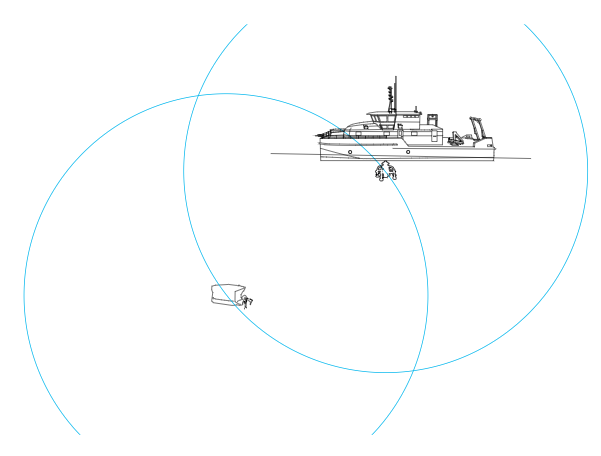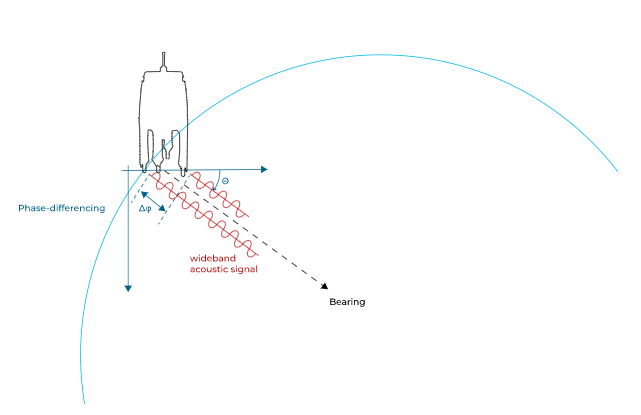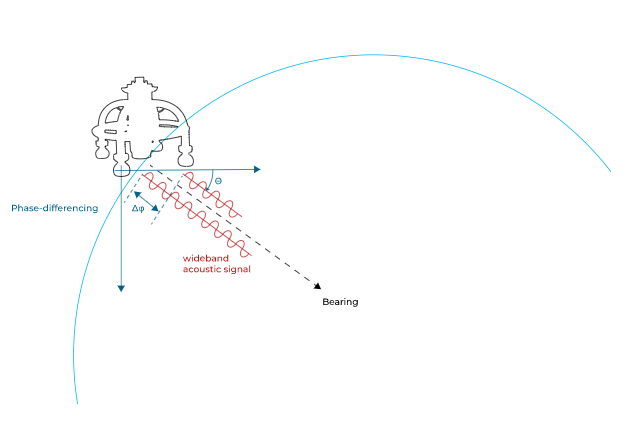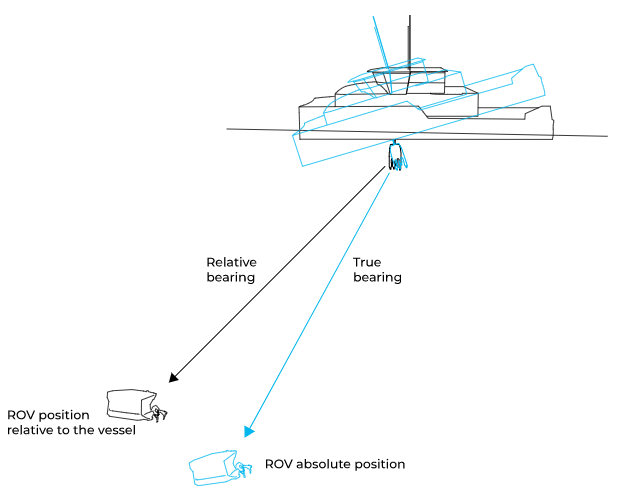What is a USBL ?
USBL (ultra-short baseline, also sometimes known as SSBL for “Super Short Base Line”) is a method of underwater acoustic positioning. It is used to track subsea targets such as ROVs/AUVs or divers. It can also be used as a mean of position referencing for surface vessels Dynamic Positioning (DP).
USBL positioning is used from shallow to deep waters (down to 10,000m and more) and its accuracy is proportional to the distance, typical from 1-2% of the slant distance for basic equipment and up to 0.06% for the ultimate USBL systems.
USBL positioning is suitable for a wide range of applications, including subsea asset tracking, subsea structure placement, LBL array calibration, UXO survey, IMR (Inspection, Maintenance and Repair)…For metrology and sub-decimetric deep water applications LBL solutions will be more suitable.
A complete USBL system consists of a transceiver, which is mounted on a pole under a ship, and a transponder or responder deployed on the seafloor, or on a subsea vehicle or a diver.

An acoustic pulse is transmitted by the transceiver and detected by the subsea transponder, which replies with its own acoustic pulse. This return pulse is then detected by the transceiver.
The time between the transmission of the initial acoustic pulse and the reply is then measured by the USBL system and is converted into a range.

A USBL head contains an array of transducers separated by a baseline from a centimetre to decimetres. When the subsea transponder reply pulse is detected by the different transducers, a phase-differencing method within the transducer array is applied to estimate the direction to the subsea transponder, also called “bearing”.

Knowing the range and the bearing, the relative position of the subsea transponder is then calculated.
It is worth noting that positioning precision is mainly sensitive to bearing, especially for long range applications. The bearing precision mostly depends on the array geometry. A larger antenna will provide a higher precision and transducer vertical diversity will provide a wider acoustic coverage (horizontal tracking). Bearing precision also depends on signal frequency and the higher the signal frequency is, the more accurate the system will be.

Finally to calculate the subsea position in an absolute reference (WGS84, UTM…), the USBL system must be coupled to a GNSS system, and a Gyro compass that will compensate the orientation of the ship at the detection instant reply. A preliminary calibration is mandatory to accurately estimate the installation misalignment.
Pre-calibrated USBL systems integrating an acoustic transceiver and gyrocompass in the same housing also exist, such as iXblue Gaps Series. This allows more rapid deployment and offers optimal performance without all the constraints linked to calibration.
After being asked a question, we can use the Beidou positioning system, GPS positioning system on the ground, then how do we position underwater? On Earth, water accounts for about 71 percent of the Earth's surface area, and although we humans live mostly on land, we never stop exploring the underwater world.
When we explore the underwater world, it is necessary for us to have a set of underwater positioning system, to absolutely know our underwater position, at this time underwater positioning "sensor" is born. This sensor system is a underwater acoustic positioning system, which is divided into ultra short baseline USBL, short baseline SBL and long baseline LBL.
Acoustic positioning system can be divided into long baseline, short baseline and ultra short baseline. The baseline is the line between the beacons. For example, if you listen to a sound with one ear, you can't tell where it's coming from, but if you listen to a sound with both ears, you can tell exactly where it's coming from. The receiving sensor of the ultra-short baseline is similar to the human ear, and the distance between the ears is equivalent to the baseline. The long baseline system, whose beacons are several kilometers to tens of kilometers apart, provides better positioning accuracy, but submersibles need to be deployed on the seafloor for accurate underwater operations. Short baseline system baselines are several meters to tens of meters in length. The ultra-short baseline system, which receives sensors only a few tens of centimeters apart, has the greatest advantage of being easy to install and flexible to use.
Nanjing Banning Company is a supplier of ultra short baseline positioning system equipment. After 15 years of accumulation, we have developed a set of our own system that can be commercialized. The system is already widely used in our seas and lakes and rivers. In the East China Sea, our ultrashort baseline equipment transmits accurate location information every day. In the Yangtze River Basin, our ultrashort baseline positioning system collects data for fishing teams and fish conservation organizations. In Taihu Lake, our underwater positioning system is guarding our underwater detection equipment every moment.
The domestic ultra short baseline positioning system will consider your data security more. Currently, there are very few suppliers of domestic high-precision ultra-short baseline sensors, and some universities are mainly studying these products. As far as we know, we are the earliest manufacturer of domestic high-precision ultra-short baseline sensors. At present, our delivery quantity of ultra-short baseline sensors has exceeded 100 sets/set. At present, the global ultra-short baseline market is mainly monopolized by some companies such as the United States, the United Kingdom and Norway. These countries all have strong demand for underwater detection, so some underwater acoustic positioning system companies were born. In recent years, our country's demand for underwater detection has been greatly increased, and there is an urgent need for a domestic supplier of underwater acoustic positioning system. Under this background, we transform the research and development achievements of scientific research institutions, and carry out mass production of underwater acoustic positioning system to meet the needs of the domestic market.
Marine sensors in our country are relatively backward, with import dependence of more than 70%. I believe that with the deepening of our research on Marine lakes, more technological monopolies will be broken.
To sum up:
1: Our ultra-short positioning system is small in shape, high in positioning accuracy, humanized PC software, has been listed in a number of key units;
2. Technically, it has achieved mass production with high stability and reliability.
3: Fast delivery cycle;
4: Customizable;
5: Real domestic technology, national pride.
6: Solve the ultra short baseline installation error calibration device and its method.



